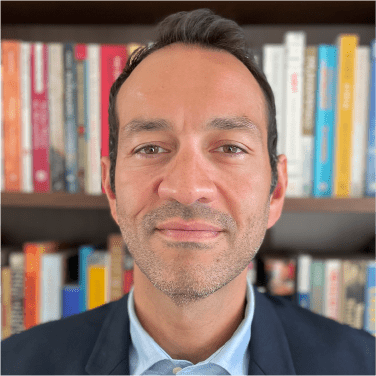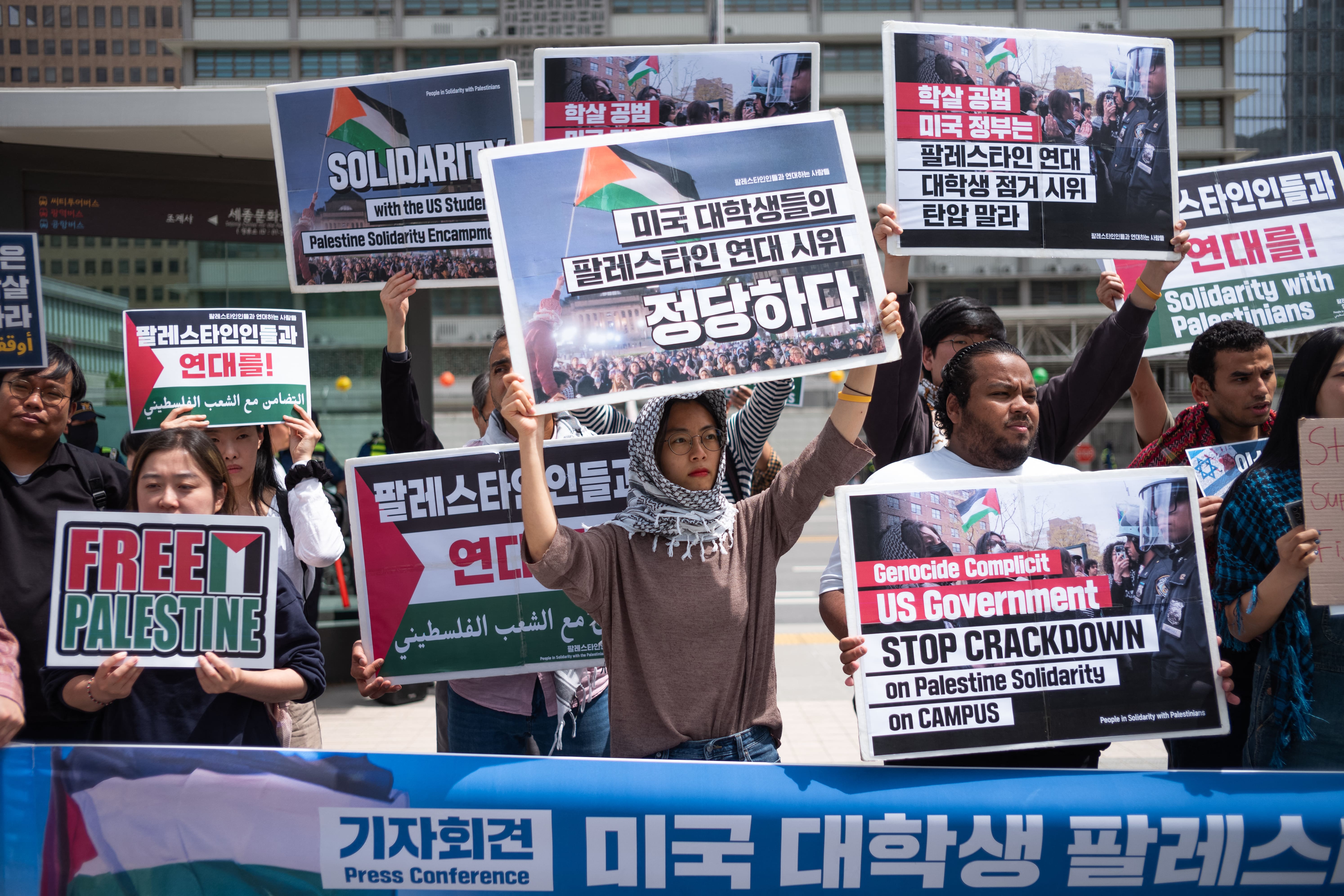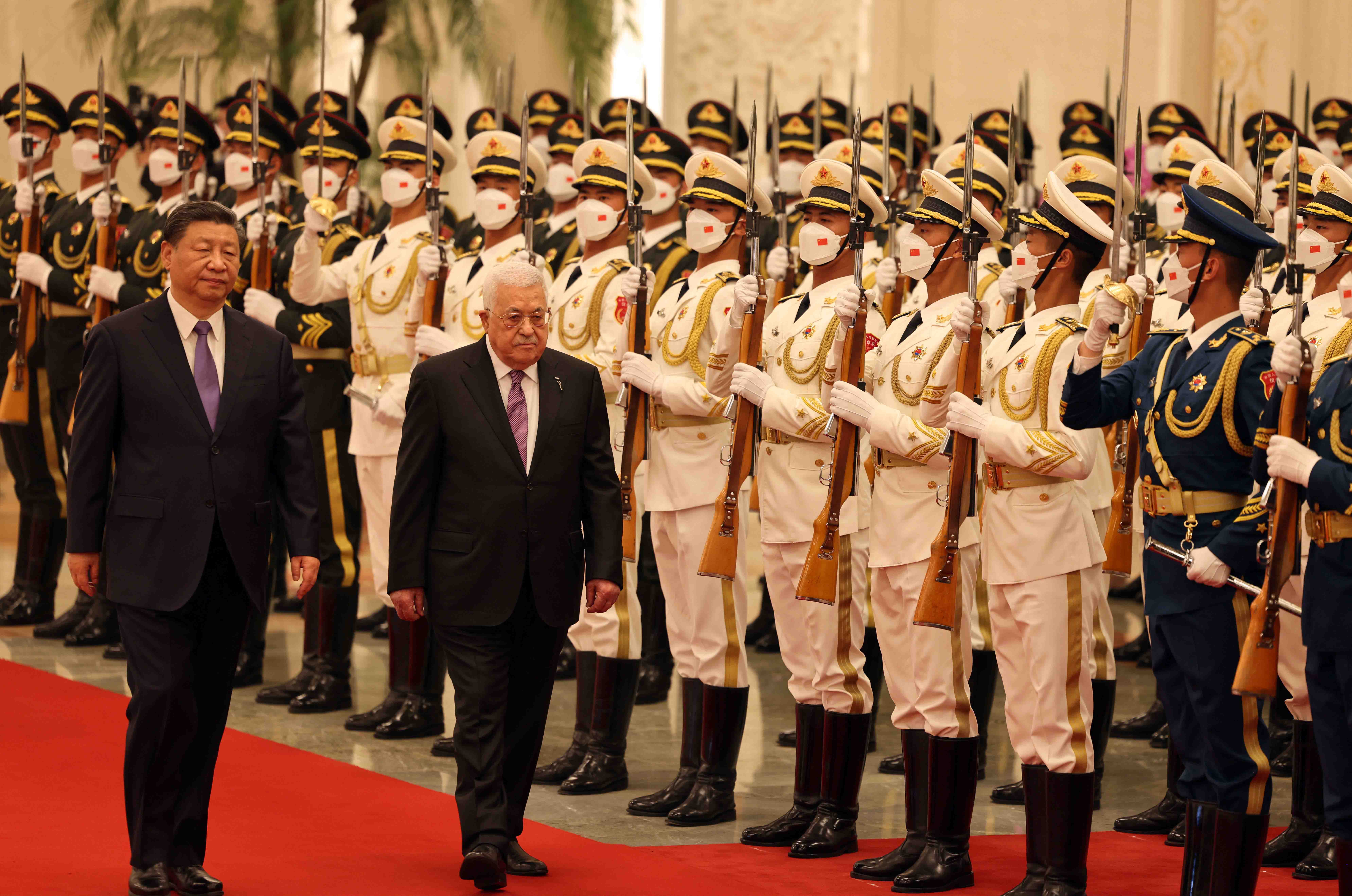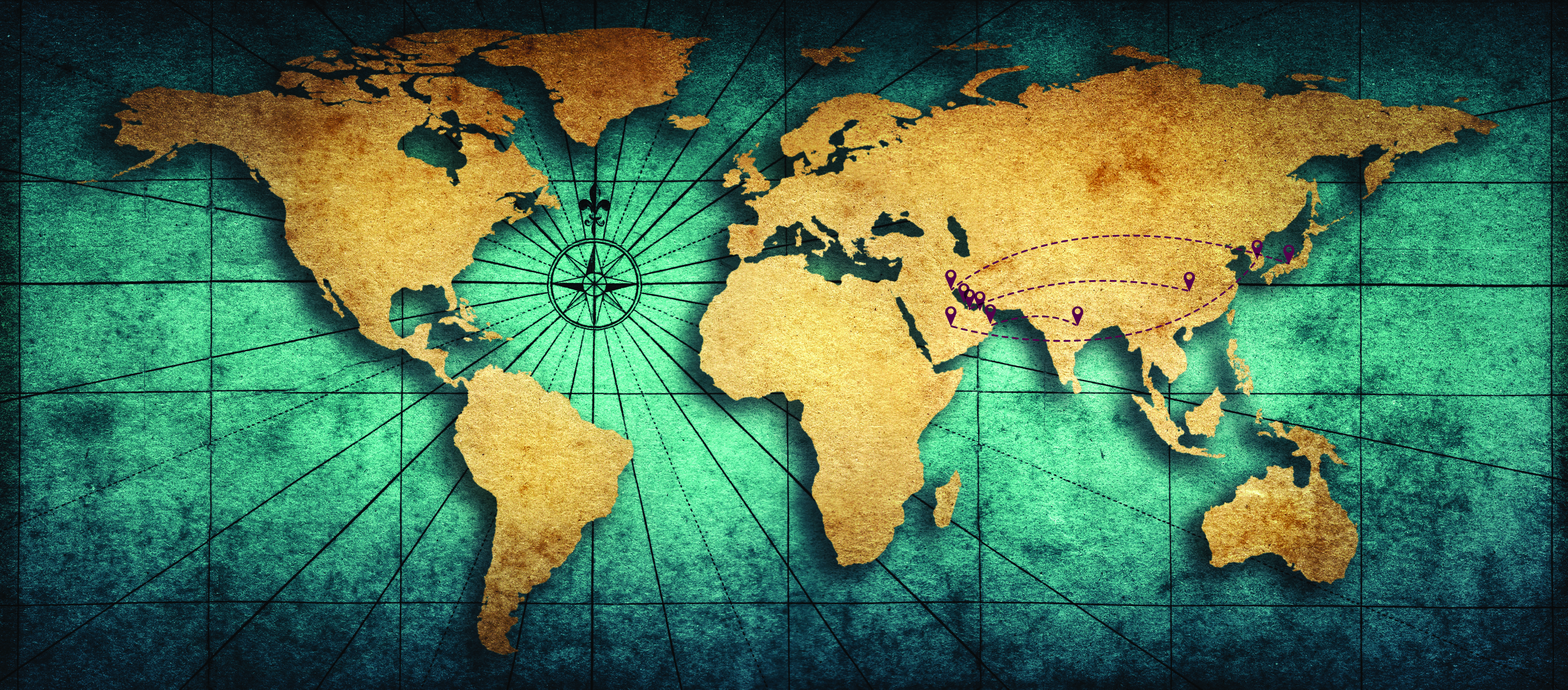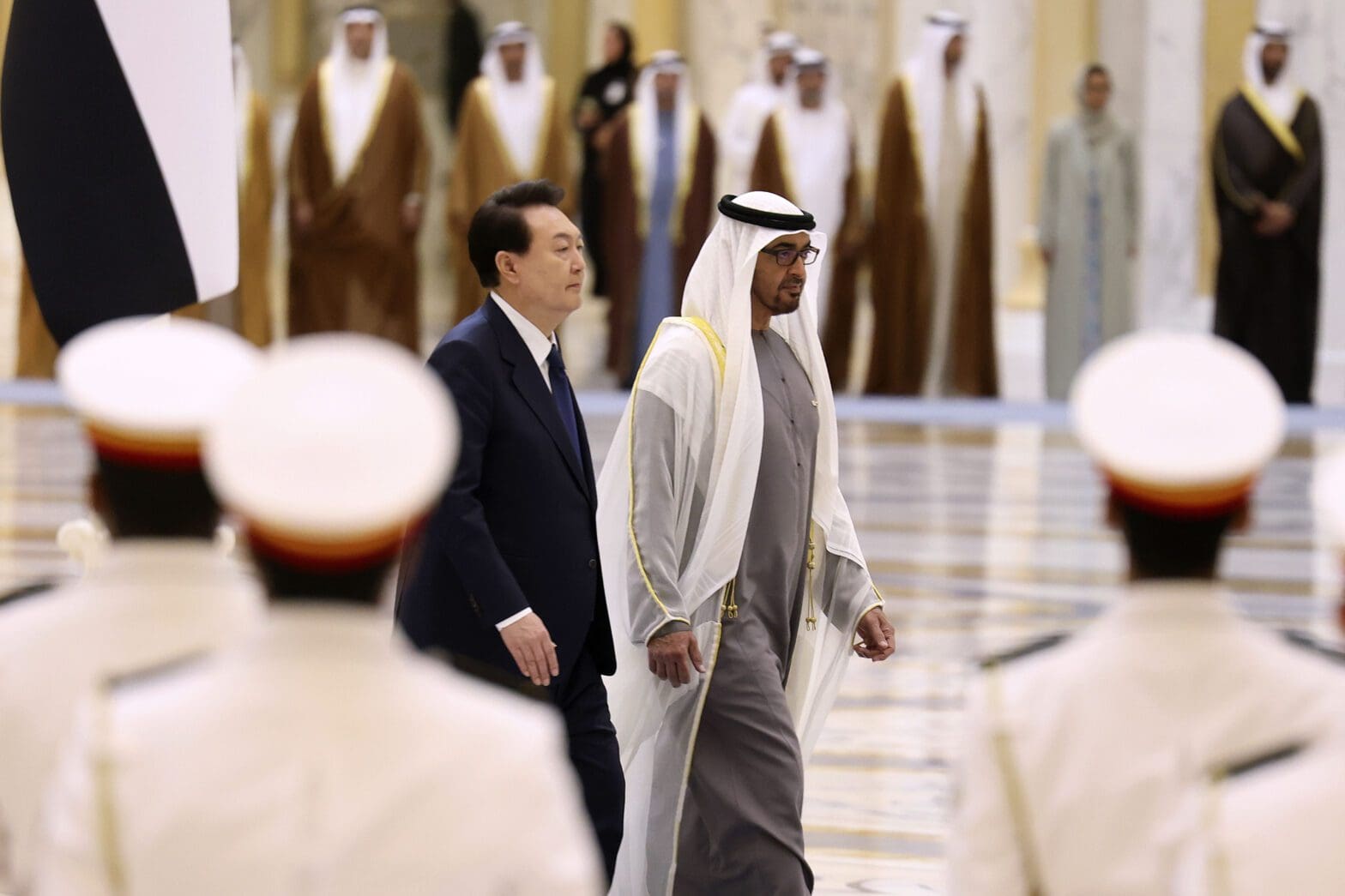
South Korea and GCC States:
A Growing Partnership
Issue Brief, August 2023
Key Takeaways:
Deeper Ties: South Korea and Gulf countries share robust ties spanning various sectors. While relations have historically been grounded in energy and construction, over the past two decades, they have grown to encompass deeper political and security ties.
Strategic Objectives: When it comes to GCC states, South Korea has two strategic, primarily economic, objectives. Firstly, to keep crucial energy supplies from the region flowing to power its economy, and secondly to secure more construction contracts and exports to lucrative GCC markets.
Bilateral vs. Multilateral Approaches: Despite fresh momentum in the GCC-South Korea Free Trade Agreement (FTA) negotiations, the deal has yet to materialize, and South Korea continues to also pursue bilateral deals such as the potential Comprehensive Economic Partnerships Agreement (CEPA) currently under negotiation with the UAE.
Dynamics of Inter-Asian Competition: As GCC states expand and diversify their Asian partnerships, this may come at the expense of further cooperation with South Korea with competition from countries such as China and Japan.
Introduction
Over the past few years, Asian powers have strengthened their economic, political, and security relations with countries across the Middle East and North Africa (MENA). While much attention has been given to China’s growing role, another Asian power has been working diligently and consistently to expand its own footprint across the region, notably in the Gulf: South Korea.
South Korea’s growing role can clearly be observed over the past two decades, under successive administrations, but especially since President Yoon Suk Yeol was elected in March 2022. The following November, Saudi Crown Prince Mohammed Bin Salman visited Seoul and signed $30 billion-worth of cooperation and investment deals.1 President Yoon also visited the United Arab Emirates (UAE) in January 2023, further cementing South Korea’s relations with its closest partner in the MENA region, particularly on the economic, security, and energy fronts. Additionally, Seoul has boosted its relations with Qatar, where several South Korean companies have contributed to major infrastructure projects including the Doha Metro, Al Thumama Stadium, and the National Museum of Qatar. In addition to these growing economic and political links with Gulf Cooperation Council (GCC) members, South Korean soft power has been growing across the region, in the form of its films, television, music, and cuisine.
What are South Korea’s objectives in the Gulf, and how have successive Korean governments pursued them? How do South Korea’s interests converge and diverge with other Asian powers in the region? This issue brief argues that South Korea is increasingly seen by Gulf decision-makers as an attractive partner with many advantages over other powers. Economically, it is one of the region’s most important trading partners and a major contributor to its infrastructure and development. It is technologically advanced and more open to exporting both technology and technical know-how, including in the nuclear field.
Politically, its close ties with the United States mean that its cooperation with the GCC does not raise concerns in Washington in the way that Chinese involvement does. It is also open to contributing to regional security through peacekeeping and anti-piracy operations, as well as defense equipment. Moreover, these activities are less domestically restricted than Japan, for instance, which is still bound by its pacifist constitution, despite ongoing efforts by Japan’s ruling Liberal Democratic Party (LDP) to change it.2
South Korea’s Growth Driven by the Gulf’s Oil Boom
While Korean ties to the Middle East date back hundreds of years, modern relations between the Republic of Korea (ROK) and the region were largely a product of the 1970s.3 Then-president Park Chung-hee’s efforts to boost the South Korean economy—spurred by the added incentive of strategic competition with North Korea—began to focus on the MENA region in the wake of the 1970s Gulf oil boom.4
The newfound wealth of Gulf oil exporters brought the prospect of new markets for South Korean goods, along with new construction and services contracts for the country’s conglomerates. At the peak of this trend, in 1982, MENA construction contracts accounted for around 7% of South Korea’s total gross national product, while Middle East contracts accounted for over 90% of overseas engineering, procurement, and construction contracts.5 These contracts helped mitigate the trade imbalance resulting from South Korea’s growing imports of oil and natural gas from the region.
ROK firms secured a foothold in GCC economies, such as Saudi Arabia, partly, by significantly undercutting the competition on price, compromising profit margins to secure a higher volume of contracts.6 South Korean diplomatic engagement and development assistance also paved the way for more contracts.7 These projects were initially supported by low-wage Korean labor: between 1974 and 1985, over one million South Korean workers would travel to the MENA region, largely as construction workers, before rising incomes at home minimized the economic incentives for South Koreans to seek work abroad.8
The twin pillars of energy imports and construction contracts continued to be the foundation of South Korea’s relationships with the GCC into the 2000s. The world’s tallest building, Burj Khalifa, was constructed primarily by Korean conglomerate Samsung C&T, between 2004 and 2009. Successive Korean presidents, including Lee Myung-bak (2008-13) and Park Geun-hye (2013-17), sought to capitalize on the second oil boom of the 2000s to secure more contracts for South Korea’s export-led economy. Korean trade with Gulf oil producers expanded dramatically in the 2000s compared with the 1990s, with large-scale contracts such as a $40-billion contract with the UAE in 2009 to build and operate four nuclear reactors (two of which came online in 2021 and 2022 respectively), beating bids by firms from the United States and France.9
South Korea’s Strategic Objectives in the Gulf
The thrust of South Korea’s engagement with the region is tied to its own economy. Its primary strategic objective has long been to secure a stable and consistent supply of energy (both oil and natural gas), critical for its development. In addition to China, Japan, and India, South Korea is also one of Asia’s most-reliant economies on oil from the MENA region, which accounts for 70% of its crude imports.10 Despite efforts to diversify its energy sources and increase its energy security,11 it continues to rely on the GCC, particularly Saudi Arabia.
Given the scale of these imports, South Korea runs a large trade deficit with the region as a whole, exporting around $50 billion less to the Middle East in January-July 2022 than it imported from it.12 That said, South Korea runs sizeable trade surpluses with non-oil-exporting countries in the region, notably Türkiye ($6.3 billion in 2022) and Israel ($518 million in 2022). However, the country’s trade volumes with MENA as a whole, both imports and exports, tend to follow the price of oil, lower crude prices reduce the cost of South Korea’s energy imports and mean that oil-exporting governments have lower revenues with which to purchase South Korean goods and services.13
The second pillar of Seoul’s strategy is therefore focused on increasing its exports to the region and winning a larger share of construction contracts. Korean firms have historically been quite aggressive in seeking contracts. When offers of cheap labor and competitive pricing would not suffice, some firms have been willing to pay high commissions to secure contracts in the GCC.14
A Limited, but Reliable Security Partner
Historically, South Korea’s active security role in the MENA region has been limited, with few boots on the ground despite periodic pressure from the United States, Seoul’s ally. Yet, in recent years, the ROK has significantly stepped up its defense footprint in the region through another, more economically profitable means: arms exports.
The Korean military served alongside both the U.S.-led coalition that pushed Iraq out of Kuwait and the US-led coalition that invaded Iraq in 2003, albeit under considerable diplomatic pressure from Washington, and focused mostly on civilian projects and logistics.15 Apart from this, most of South Korea’s security presence in the region has been through United Nations peacekeeping missions, notably the United Nations Interim Force in Lebanon (UNIFIL). Since 2007, the Dongmyung Unit (known locally as “God’s gift”) has undertaken a number of peacekeeping and reconstruction operations in the country. Alongside reconnaissance activities, it has organized a civil-military cooperation project called the “Peace Wave”, invested in public health, as well as organized a number of school activities, including Taekwondo classes that proved to be quite popular.16 On the far western edge of the MENA region, a Korean military medical unit served in the United Nations Mission for the Referendum in Western Sahara (MINURSO) in the Western Sahara for 12 years, up until 2006.17
Other, limited, forms of Korean security assistance have included an ongoing anti-piracy naval presence in the Gulf of Aden, known as the Cheonghae Unit.18 Seoul also sent this task force to monitor the Strait of Hormuz in 2020. It is notable that it did so separately from the U.S.-led International Maritime Security Construct (IMSC), possibly to avoid damaging relations with Iran.19 South Korea was also a member of the Global Coalition against Daesh/ISIS, formed by the United States in late 2014, though again, it did not contribute directly to military aspects of Operation “Inherent Resolve” in Iraq and Syria.20
Yet while its presence in the region has remained limited in terms of deployments, South Korea has significantly increased its arms exports to the region in recent years with considerable economic returns. In contrast to its neighbor Japan, whose weapons exports are constrained by its constitution, Seoul faces no such limitations. By 2022, it emerged as one of the largest arms exporters in the world. According to the SIPRI Arms Transfers Database, it went from the 31st to the seventh-largest global arms exporter, between 2000 and 2020, when it exported $3 billion-worth of armaments. This increased further in 2021 with $7 billion in sales, and a new milestone was achieved with defense exports exceeding imports for the first time. Exports also grew in 2022 with a $13.7 billion deal with Poland to provide Korean military hardware. Deals were also struck with Egypt, Saudi Arabia, and Australia.21
Strong Ties to the UAE and Saudi Arabia
While the ROK has well-developed relations with countries across the region, Korean policymakers have historically prioritized ties with GCC member states, namely Saudi Arabia and the UAE, as major energy exporters, and the largest and third largest economies, as per GDP, in the MENA region respectively.22
Roh Moo-hyun (2003-2008) became the first South Korean president to visit the UAE in 2006, signing a Security Cooperation Agreement which became a key milestone in bilateral relations between both countries.23 The ROK-UAE Joint Economic Board, established at the same time, contributed to the growth of bilateral trade and increased Korean involvement in infrastructure projects in the UAE, which was in the midst of a construction boom. The foundations were also laid for South Korea to gain further access to energy resources from the region, which yielded results under the successors of Roh Moo-hyun.24
However, it was President Lee Myung-bak (2008–2013) who laid the foundations of a broader strategic partnership with the UAE. Having spent 27 years at Hyundai Construction, leading many projects in the Middle East, President Lee knew the region and its business culture well. This helped him significantly expand and deepen Seoul’s investments there, particularly in the UAE,25 including laying the foundation for the deal to build the Al Barakah nuclear plant. This was to be the largest overseas contract in ROK history, providing a way into the global nuclear power market, traditionally controlled by the United States, France, Japan, Russia, and China.
Korean ties with the UAE have generated not just electricity, but controversy at times. Investigations into President Lee, after he left office, uncovered a secret military pact, between the ROK and the UAE, that would have obliged South Korea to intervene militarily, bypassing the Korean National Assembly, should the UAE face a security crisis.26 This pact appears to have been a quid pro quo to secure the contract to build the Al Barakah plant, underscoring the extent to which South Korea’s strategic objectives in the region are driven by its economic interests. It is also worth noting that the country’s special forces have been training Emirati armed forces since at least 2010.27 South Korean policymakers and business leaders increasingly view the UAE both as a market and a model for further engagement as they extend their reach and influence within and beyond the region. This is highlighted by a subsequent Korean bid to build several nuclear reactors in Saudi Arabia.28
Indeed, successive Korean administrations have worked hard to deepen ties with Saudi Arabia. In addition to being the largest exporter of oil to the ROK,29 the Kingdom has awarded South Korean firms lucrative contracts in various industries. South Korean companies are playing an increasing role in Saudi Vision 2030, the Kingdom’s ambitious economic diversification and development drive. These ties were cemented and formalized with the establishment of the “Saudi-Korean Vision 2030,”30 reflecting South Korea’s growing role in Saudi Arabia’s development – again with a particular focus on the economy – allowing Seoul to benefit from Riyadh’s energy resources and investment capacity while Riyadh makes use of Korean expertise and technical know-how.31
Saudi Crown Prince Mohammed Bin Salman’s visit to Seoul in November 2022 underscored the importance of these ties to both sides. Saudi companies have invested billions of dollars in South Korea, including energy behemoth Aramco with $5.2 billion and chemicals giant SABIC with $1 billion. South Korean firms have also made investments in the Kingdom with a total value of approximately $3.7 billion, in sectors ranging from mining and quarrying to electricity, gas, air conditioning, transportation and storage, manufacturing, and construction.32
Yet despite these growing ties, Saudi Arabia did not automatically favor South Korea’s bid over those of France, Russia, and China to build its first nuclear reactor. While the selection of the Russian bid now is unlikely given sanctions against Moscow and the ongoing war in Ukraine, from a Saudi perspective, each of the remaining bids have their own advantages and disadvantages. Some reports indicate that the kingdom aspires to enrich its own uranium,33 rather than following the UAE which decided to “forgo domestic enrichment and reprocessing of nuclear fuel.”34 Such a move could disadvantage the South Korean and French bids. The Chinese bid may offer some flexibility on enrichment but would raise alarm bells in Washington given the growing rivalry between China and the United States, and concerns over nuclear proliferation in the region. In exchange for a potential normalization deal with Israel, Saudi Arabia is reportedly seeking further security commitments from the United States and for Washington to present its own nuclear bid.35 Despite this increasingly competitive field, should South Korea win the bid, it would be a major win, partly thanks to the country’s success in the UAE with the Al Barakah project, as well as deepening Saudi-South Korea ties.
Growing Ties with Qatar
Over the past decade, South Korea and Qatar have also worked to cultivate closer diplomatic, political, and economic ties. Once again, these have historically focused on energy exports to the ROK, on the one hand, and large-scale infrastructure projects by Korean firms on the other.
South Korea’s renewed engagement comes as Qatar expands output from its vast undersea North Field gas reserve. The expansion is projected to make Qatar the world’s largest liquefied natural gas (LNG) exporter by 2030.36 Qatar is already the largest exporter of LNG to South Korea, making it the latter’s second trading partner in the Middle East.37 In August 2021, Korea Gas Corp (KOGAS) signed a 20-year agreement to purchase 2 million tonnes of LNG annually, from 2025 to 2044, from Qatar Energy.38 The deal’s signing preceded the Russia-Ukraine war, playing in Seoul’s favor, as the subsequent European scramble to diversify away from Russian gas sent prices soaring. Those dynamics indicate that Qatar’s importance for South Korea’s energy security will likely grow.
Beyond energy, the relationship includes trade and investments in areas such as semiconductors, electric vehicles, and renewable energy such as hydrogen and solar power.39 In 2022, Samsung C&T was awarded a contract to build Qatar’s largest solar plant, worth $630 million.40 The Korea Institute for International Economic Policy (KIEP), a leading Korean think tank, has also highlighted potential cooperation in other areas such as water desalination, building on South Korea’s experience in Kuwait and Oman.41
Free Trade Agreements and Inter-Asian Competition
Economic ties aside, regional and international geopolitical dynamics have a major impact on how South Korea approaches the Gulf. As competition has escalated between the United States and China, Seoul has carefully navigated a middle path of “balanced diplomacy” to avoid alienating either its top security partner (the United States), or its number one trade partner (China), despite competing with the latter in the fields of technology, infrastructure projects, and manufacturing.
Ongoing talks over the establishment of a Free Trade Agreement (FTA) with the GCC reflect a desire among South Korean policymakers to be a step ahead of China, which is also in the process of negotiating its own FTA with the bloc, along with the importance of the Gulf’s markets for Korean goods and services.42 South Korea and the GCC had first tabled the possibility in 2007, with formal negotiations launched in 2009,43 but after three rounds of negotiations that year, the discussions went into hiatus for 13 years. The talks were finally revived in 2022 after President Yeol assumed office, following discussions between the countries’ trade ministers in late 2021. The process has since moved rapidly, with a fourth round of talks in March 2022,44 a fifth in June,45 a sixth in October46 and a seventh in February 2023.47
The prospect of reducing or eliminating the 3% import tariff South Korea adds on crude oil imports has greatly incentivized GCC states to pursue an FTA.48 In addition to the Gulf’s advantage in shipping distances, the deal could further boost GCC competitiveness against U.S. producers. An FTA could also help revive South Korea’s non-oil trade with the GCC countries.
As with China, South Korea’s bilateral non-oil trade with both Saudi Arabia and the UAE is substantial, which may explain why both Asian countries have remained focused on GCC-wide trade agreements rather than striking bilateral deals with either country (as India did with the UAE).49 After the initial announcement of UAE-ROK trade negotiations,50 Saudi Arabia suggested a region-wide trade deal, perhaps seeking to broaden the benefits of such an agreement with the East Asian country. Accordingly, statements about bilateral cooperation, investment and knowledge transfers between South Korea and the UAE have emphasized the UAE and South Korea’s “special relationship” within the broader framework of a GCC-ROK FTA.51
South Korea’s other main Asian competitor in the region is Japan, which continues to enjoy a clear market advantage when it comes to exports of road vehicles and other forms of transportation. This could change if Korea or China were to secure an exemption from the UAE’s 5% import tariff on automobiles or 12% tariff on trucks.52 Both Japan and China have also positioned themselves to play a role in the region’s growing renewable energy sector, meaning South Korea will face growing competition in that space, despite winning mega projects such as Samsung’s solar power plant in Qatar.53
Conclusion and Outlook
As the economic weight of the world shifts to Asia, countries in the GCC are increasingly looking eastwards and seeking to deepen ties with the four major Asian powers, China, Japan, South Korea, and India.54 While China has led the pack, closer ties with Beijing brings political baggage due to the country’s rivalry with the United States, a historic ally of all six GCC member states. This gives countries in the Gulf further impetus to expand their relations with countries such as South Korea, Japan, and India. While securing an agreement has thus far proved challenging, should Seoul be able to sign an FTA with the GCC, this would provide an excellent opportunity to solidify and consolidate the gains acquired over the past few years.
South Korea could also expand its security role, particularly in the maritime domain. South Korea’s recently released National Security Strategy, the first under Yeol’s administration, indicates how the country views ongoing changes in the international system, and highlights its ambitions to step up its contributions to strengthen international order, as well as bolstering its military capabilities.55 Last year, the country also released its Indo-Pacific strategy, which reflects many of these themes, and highlights challenges in the Indo-Pacific, including uncertainty in the security environment, rising geopolitical competition, and potential disruptions to supply chains.56
Given the importance of GCC energy supplies, South Korea can expand its contribution to the U.S.-led Combined Maritime Forces (CMF) which extended its geographic scope last year to include the Red Sea, Bab el-Mandeb, and the Gulf of Aden.57 Such an expansion would further display South Korea’s commitment to the security and stability of the region, as well as showcase the country’s prowess in the maritime shipbuilding and technology spheres.58
Endnote
